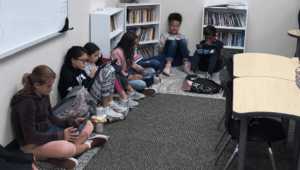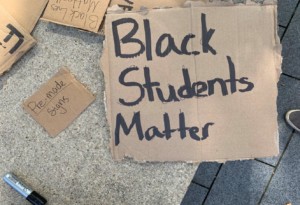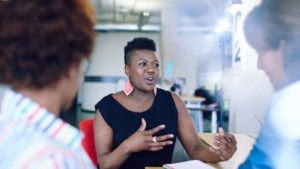Making The Most of Millennial Teacher Mindsets

Millennials make up the majority of GenDIY. Among these young people who are paving pathways to careers will be those who return to schools and districts as educators and EdLeaders. Millennial teachers are returning to classrooms with the realities common to their generation, such as flexible learner-centered models. Millennial teachers will more likely support learning experiences that allow students to learn when and how they want, the ability to demonstrate mastery, and social learning options and collaboration opportunities. As more millennial teachers enter classrooms they will work with students to find and create better learning opportunities, and that’s what the GenDIY series is all about.
This blog first appeared on labs.pearson.com. To learn more about GenDIY and for more information on how to add your voice to the project, check out Tell Your Story: Do-It-Yourself Pathways From School to Career.
Nick Friedman
Born between the years 1982 and 2000, Millennials are the first generation to grow up thoroughly steeped in information technology. It’s second nature to them. So among Millennial teachers, there’s no question about the value of integrating tech into their classrooms — they are true believers, and will evangelize to any doubters.
But surveys show that Millennials are also known for having certain other attitudes unique to their generation — the same attitudes that have enabled the Mark Zuckerbergs and Brian Cheskys of the world to change the old order. It’s the wise school administrator who tries to understand the Millennial mindset and the role both they and technology can play in unleashing classroom creativity. Work out how to maximize the potential of this generation’s particular attitudes and approaches, and the benefits can be immense.
Millennials expect to be heard
Millennials have been taught to speak up and express their opinions. Their experiences online have taught them that opinions and ways of working can and should be respected based on merit, not their place in a social or workplace hierarchy, or simply because that’s the way things have always been done.
They particularly take pride in touting the wonders of the digital realm. That’s certainly true of Bryan Slater, a history teacher at Sumner High School in Washington State, who says “there isn’t a day that goes by that I’m not having a conversation with my colleagues about what they ‘should’ be doing with the devices that exist in their classroom.”
Last year, in an effort to improve efficiency, Slater introduced the flipped classroom model into Sumner High. It has really taken hold in the math department. This year, the 13-year teaching veteran has a new goal: “I’m trying to convince our administrators to move to a flipped staff meeting model,” he says.
At H.G. Olsen Elementary in Texas, Meghan Zigmond says she can be “very vocal when I’m passionate about something.” Zigmond is a first-grade teacher with nine years’ experience who helped to persuade her district to start using Google products. When tech newbies ask her for tips and tricks, she’s available through text or a phone call almost any time of the day or week. “I try to be sure I’m respecting that others change and grow at different rates,” she says, “but there are some things we just don’t need to practice in education anymore.”
Millennials think outside the box
As digital natives, Millennial teachers are used to engaging with a wide variety of content forms on multiple platforms. The desktop computer in the corner of the classroom? That’s old school. Millennials flourish with new hardware and new apps.
Victoria Olson, who teaches at West Langley Elementary School in British Columbia, Canada, integrates technology “into everything I teach.” The 27-year-old has the students in her third- and fourth-grade classrooms create digital portfolios on iPads and Chromebooks.
“Developing content on creation-based applications provides deeper learning,” says Olson. Among the software they use are Google Apps for Education, Kidblog, and PicCollage. However, she warns, “Ed tech shouldn’t just be about the app, it should be what students do with the apps.”
At Iona Presentation Primary School in Western Australia, Michael Graffin opened the eyes of his students to new cultures through Mystery Skype, the free app that pits classes anywhere in the world against each other in a guessing game based on location.
But it’s not just about opening the eyes of the students to new ways of looking at the world. Graffin, a K-6 ICT integrator, also trains colleagues through tech lessons he creates on his iPad, which he then projects onto classroom screens using Apple TV.
“Technology enables me to flatten my classroom walls,” says Graffin, who’s been an educator for five years.
Millennials like to collaborate
As the first generation to grow up with social media networks, Millennials are at home sharing their lives within larger communities. They’re also used to working in small group settings starting from middle school all the way up through college.
As Michael Graffin can tell you, collaboration can happen in person or virtually. In March 2011, he and two other teachers at Iona Presentation founded The Global Classroom Project, an online community where teachers can find “global collaborative projects.” Through the project, Graffin has established relationships with educators in India, Iran, Nepal, Pakistan, Kenya, and Uganda.
On a more local level, Jordan Garrett, an instructional coach who serves a number of elementary and middle schools in the state of Illinois, credits her Professional Learning Network (PLN) for helping her excel at her job. Within that framework, she relies heavily on Twitter to learn about new conferences where she can present, and for opportunities to share and discover student work. “Twitter is without a doubt one of the most useful tools,” she says.
“Another resource is to just sit down and talk with a co-worker about current trends, ideas, and advice,” adds Garrett.
The future is here
As Victoria Olson suggests, technology per se is not a short-cut to creative teaching. It’s what you do with tech in the classroom that counts. Still, Olson understands that for older teachers, all the gadgets and apps and widgets available now and coming down the pike can be intimidating. When a baby boomer or Gen Xer comes to her in doubt, Olson shares some classic Millennial advice: Just do it.
“I tell them to try one item of technology. Just one,” she says. “If you go on Twitter, you don’t have to tweet. You can just lurk. If you use Pinterest to find a gazillion classroom ideas, that’s great. If you’re a Facebooker and just want to ‘like’ a few educational pages and glance at them now and again, awesome. I encourage everyone to explore something that will allow them to professionally develop beyond their in-person network.”
For more on millennials, check out:
- Millennials are Tolerant, Educated, Enterprising, and Hyphenated
- Tech Training Opens Lucrative Alternative to 4 Year Degree for Millennials
Nick Friedman is a contributor to Pearson Labs’ Edtech Evolves guest writer series.








0 Comments
Leave a Comment
Your email address will not be published. All fields are required.